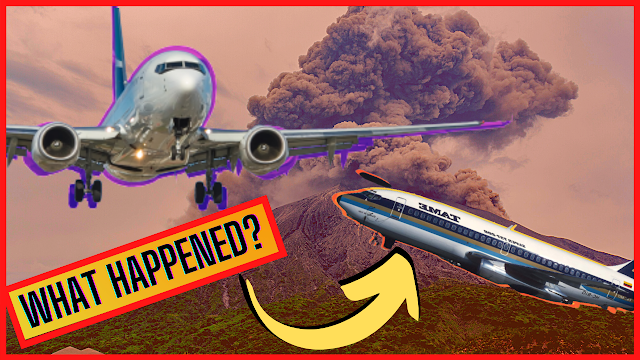From Saudi Arabian Airlines Flight 163 to Air India 855, our age has witnessed numerous similar air disasters, but the 1983 Tame Airlines Boeing 737 remains the deadliest air crash in Ecuador and Tame Airlines history as of today, until it was ceased on March 20, 2020.
On 11th July 1983, the Boeing 737-200 carrying 119 people on board, of which 8 were crew members, crashed into a hill overlooking the runway during its final approach to Mariscal Lamar airport in Cuenca, killing all of the 119 souls on impact.
Now since the crash happened 38 years back, there hasn't been substantial coverage of this incident, Neither has this incident featured in any episodes of the air crash investigation show.
Before we proceed with what happened on the morning of 11th July 1983, let us go over a brief history of the Tame airlines and why it got ceased last year?
 |
| Picture taken of Ecuador (ImageSource:pxfuel.com) |
Like many Latin American airlines, Tame airlines was founded in Ecuador on 17th December 1962 by the airforce, and was the flag carrier and the largest airline of Ecuador back then and was till now.
Why was the airline founded by the country's Air Force?Because, since the country was not entirely well connected and parts of the country not reachable by road transport, the military airline gradually started training pilots and expanded its fleet and network over the years.
The airline established its major hub in Quito, at Mariscal international airport, and predominantly connected Columbia, few parts of the united states, like New York, and major domestic routes within the country.
At some point during its first decade of operations, the airline also had a widebody Airbus A330-200 in its fleet.
and After 51 years of being under the administration of the Ecuadorian air force, the airline changed its status to a state-owned company.
Looks like the Tame airline is doing pretty good, isn't it?
After becoming a state-owned company, Tame airlines launched subsidiaries of its own, the TAME Amazonia and TAMEXpress. A huge mistake of expanding too fast and too soon.
As of today, the airline stopped operations on May 20, 2020. Clearly, the formidable covid 19, forced the already struggling airline to sell its assets and discontinue all operations.
Now when it comes to the fleet of the airline, it had a diverse 7 aircrafts in operation's, the majority of them being the ATR 42's being used for its domestic networks and historically comprised of several Boeing 727, 757's Beechcraft 200, Douglas DC-3, and many more.
Before we go over why the Boeing 737-200 crashed all of a sudden during its final approach, and what went wrong, let us go over the history of this aircraft involved in the crash
 |
| HC-BIG involved in the 1983 Tame Airlines Crash (Imagesource:Wikicommons) |
Believe it or not, The Boeing 737-200 bearing the registration number HC-BIG, was the only Boeing 737 to ever operate by Tame airlines to date.
The aircraft was initially delivered to the airline on the 2nd of October 1981, 2 years prior to the crash, and was in the Tame ever since.
Coming back to the Incident
 |
| Route of the Tame Airlines Boeing 737 (Imagesource:Googlemaps) |
On the morning of 11th July 1983, the Boeing 737-200 was a routinely scheduled flight from the Mariscal Sucre international airport in Quito, the main hub of the airlines, to the Mariscal Lamar international airport in Cuenca.
The plane took off, and everything went smoothly, until the few minutes before landing.
It was stated that the crew reported fog on their approach towards the Mariscal Lamar airport, but continued with their final either way.
Now, of all the time they had, the pilots took these final minutes to get themselves distracted and talk about various labor problems within the airline, and never realized the plane was flying so low and close to the mountain which overlooks the runway.
Now you might be thinking, is that all the pilots were doing during their final approach?
Nope, along with the extended conversations they were having, they were experimenting with some of their aircraft controls and systems!
Seconds before the Boeing 737 hit the mountain, the Ground proximity warning system(GPWS) activated and warned the pilots about terrain collision, but it was already too late.
Both the captain and the FO attempted to climb by applying full throttle, however, all of the 119 souls on board perished on impact.
With every air disaster in the world, there has to be an investigation carried by the official authorities and safety boards, to this day, is what makes air travel the safest mode of transportation.
 |
| Crash location of the Tame Airlines Boeing 737 (Imagesource:Googlemaps) |
Initially, during the investigation, a probable cause of sabotage was feared by the aviation authorities of Ecuador, or a mid-air explosion as well, but was overthrown due to lack of evidence.
after several months of examination and with the aid of the aircraft manufacturers, Boeing, Pratt & Whitney, and the United States National transport safety board (NTSB).
It was concluded the probable cause of the crash to be pilot error.







No comments:
Post a Comment